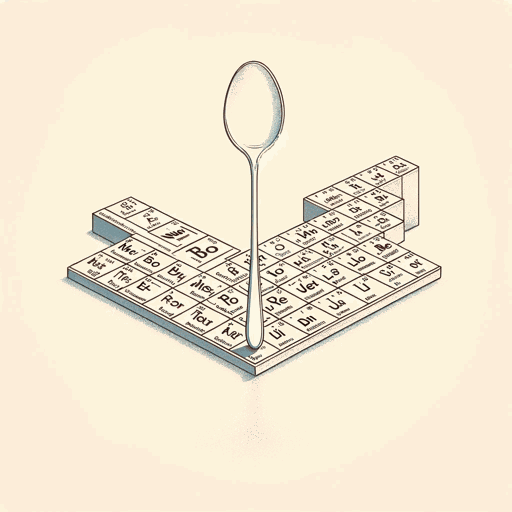93 pages • 3 hours read
Sam KeanThe Disappearing Spoon: And Other True Tales of Madness, Love, and the History of the World from the Periodic Table
Nonfiction | Book | Adult | Published in 2010A modern alternative to SparkNotes and CliffsNotes, SuperSummary offers high-quality Study Guides with detailed chapter summaries and analysis of major themes, characters, and more. For select classroom titles, we also provide Teaching Guides with discussion and quiz questions to prompt student engagement.
Summary and Study Guide
Overview
Published in 2010, New York Times bestseller The Disappearing Spoon: And Other True Tales of Madness, Love, and the History of the World from the Periodic Table of the Elements, by science writer Sam Kean, tells the story of the atomic elements that make up the Earth and everything else in the universe. Kean describes how they were discovered and the unique and often strange properties they possess. He also tells intriguing and sometimes heartbreaking stories of the hardworking scientists who uncovered the mysteries of atoms. The author also relates how, across decades of struggle, researchers manage to make sense of the fundamental particles and arrange them into science’s most basic reference chart, the periodic table of the elements.
From Plato’s early surmises about the nature of atoms to Glenn Seaborg’s carefully arranged modern periodic table of the 1960s, the story of the elements is filled with drama, humor, triumph, tears, and even death.
Marie Curie discovered and experimented with radioactive materials, won two Nobel Prizes for her efforts, and succumbed to cancer from radiation. Luis Alvarez found iridium where it doesn’t belong and deduced that the dinosaurs died from a giant space rock. Enrico Fermi caused the first manmade atomic fission but didn’t realize it; Lise Meitner figured it out but couldn’t accept the Nobel Prize because of her Jewish background. Linus Pauling conjured up the quantum mechanics of chemistry but muffed a chance to be the first to decipher DNA’s workings.
These and dozens of other scientists, some quirky, some tragic, have their moments in The Disappearing Spoon. Eacchapter also highlights a handful of elements, displaying their oddities and sometimes freakish properties. By the end of the book, all the naturally occurring elements, and most of the artificial ones known to science in 2010, have taken their bows.
Part 1 outlines the basic principles behind and creation of the periodic table, explaining the chart’s organization and describing how electrons make possible the chemistry of materials and life. Kean explains why carbon is so important to organisms and why we use silicon in computers instead of germanium.
Part 2, discusses the origins of the elements and how in human hands they can wreak havoc. Kean explains where atoms come from and recounts the discovery of the neutron, which humans then used to break atoms and release energy, such as in atomic bombs. Kean also covers humans’ development of poison gases during the First World War. He introduces two American scientists who, in a Cold War competition with the Soviets, discovered one-sixth of all the elements, including several they created in the lab.
Part 3 warns of hidden dangers in the periodic table, including two of the biggest gaffes in the history of atomic science and the careless handling of cadmium, which maimed and killed thousands. Kean balances these examples with an explanation of how gold, silver, and sulfur, when carefully managed, can improve health and cure illness. On the other hand, he emphasizes the deceptive nature of elements: Seemingly benign elements can kill without warning.
Part 4 connects the dots between politics, the arts, and the elements. Kean explains that, sometimes, the wrong people win the Nobel Prize and the right ones die for their science, and how even respected scientists can go awry. He shows how iron, lead, and tellurium, combined with human greed, have affected economics—and he draws connections between artists and the discovery of new materials.
Finally, Part 5 touches on atomic oddities that have changed the world. Cold temperatures can cause some materials, including tin, to behave bizarrely. Bubbles have led to major discoveries in particle physics. And extreme precision at the subatomic level has perfected weights and measures. Kean concludes by suggesting that yet more elements may be created—and change the shape of the periodic table.

